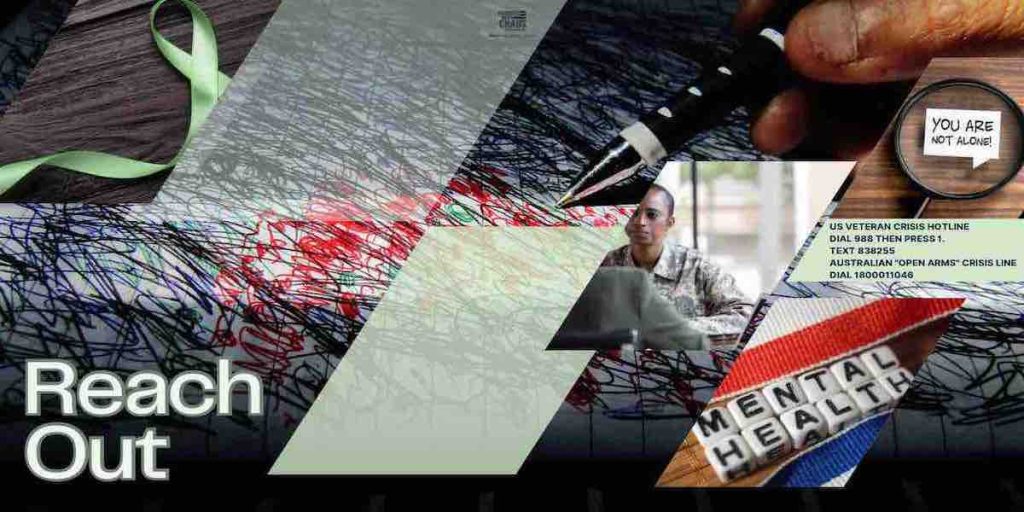Steps I have taken to help combat PTSD
Written by Jamie Bunetto on 06/26/2023
A Different View of (PTSD) – Deny Suicide Through Purpose (DSTP)
I was offered the opportunity to write an article for a magazine. Like most, I have a lot to say but do not particularly care to be heard. Ironically, though the article had little depth, I felt an overwhelming sense of accomplishment. I wanted something I could offer to the readers. (Veterans)
I am a retired veteran and retired Police Officer. I served in the Gulf War, Operation Iraq Freedom, and Operation Enduring Freedom. The only purpose of mentioning my experience is to give my perspective some credence.
As you can imagine, the topic is the all too familiar Post Traumatic Stress Disorder (PTSD). However, I am not going to discuss my experiences, complain about the VA, or tell you everything is going to be ok. Rather, I would like to share one of the things I do that seems to help me a little more every day. I hope it helps at least one of my fellow brothers or sisters to cope. I would also like to encourage anyone to share what they do or have done that helped them get out of bed every morning.
After my first tour of combat, I no longer had any interest in anything social other than getting drunk and fighting. I made some improvements when I became a husband and father at the age of 22. My wife was about eight years older than me and had a nine-year-old son. For the first few years I settled my fighting, but I still drank and had no desire to socially interact with anyone other than my family. Eventually, I won the battle on alcohol but rarely socialized. My self-induced seclusion only worsened after additional tours of combat and traumatic experiences I encountered as a police officer. With isolation, I also experienced anger, irritability, hopelessness, and sleep issues. Unfortunately, I was unable to see (or admit) that I had a problem until much later in life. I saw a therapist for a few years, and I still depend on about six-seven pills twice a day to “appropriately” function. I have chosen to take some steps on my own that have made me feel better at the end of the day, wanting to wake up the following morning and take fewer pills and some with lower dosages. The steps I take are being creative mentally to find a purpose, working cognitively through social anxieties, stress relief from physical activity, and the reward that comes from, even the smallest of, accomplishments.
Through my sessions and personal research, I have learned much about various types of therapy. In one study, “Recent experience sampling and diary studies have shown that spending time on creative goals during a day is associated with higher activated positive affect (PA) on that day.” (Conner, DeYoung, & Silvia 2018). Creativity is the first step. If you are not creative, this may not be for you. However, I found just walking around in the yard, looking at trees, and various branches, or scrolling online with the purpose to look for something worth drawing or building helps. Even if I do not immediately come up with an idea, walking around helps me calm down. I also look around the house to see if there is anything I could build or add to my yard. I have built a bedroom set, a cabinet, two patios, and a craft table to name a few. I have just recently started using a chisel and Dremel tool on smaller projects. The bottom line, having an active mind focused on potential tasks rather than negative thoughts or worse, no thoughts at all.
Once I have an idea, I begin accepting I have a purpose – even if the said purpose is for me alone. The next step is obtaining the resources. This is where Cognitive-behavioral therapy (CBT), a common form of PTSD & Social Anxiety therapy, is introduced. Joshua E. Curtiss et.al. explains, “PTSD treatments target negative changes in cognition by restructuring the thoughts and beliefs surrounding the traumatic event – (“I was assaulted; therefore, the world is dangerous”) – In challenging these beliefs, the patient may be better able to foster flexible thinking, positive affect, trust, and control in their lives.” (Joshua & Curtiss et.al 2023). Furthermore, “Cognitive Behavioral Therapy (CBT) has proven to be the most effective form of treatment for social anxiety disorder.” (Hofmann & Otto 2017). The gist, with PTSD, I approach crowds as a potential threat because I have a lack of control of my surroundings. Additionally, as a combat veteran and a retired police officer, everyone is a suspect and/or a potential threat. This was the main reason I did not actively encounter strangers and why I avoided social events for so many years. My approach to self-initiated CBT was forcing myself out of my comfort zone. I interjected myself into unfamiliar surroundings (ongoing construction sites) and initiated conversations with strangers. My goal was to meet new people (supervisors), briefly explain why I was meeting with them (PTSD therapy) and convince them to authorize me to take scrap wood from the dumpsters on their site. It seems simple, but for some, me included, it’s challenging. This leads me to step three.
“Physical activity has also been shown to improve health conditions that may accompany PTSD (e.g., anxiety, depression, sleep disturbances, and cardiovascular disease).” (Oppizzi & Umberger 2018) If you find a construction site with 10-15 dumpsters full of brand-new wood, you have some physical work ahead of you. But gathering the wood is not easy. There are planks nailed together, two by fours with hundreds of nails, pieces that are too long to fit in your truck, and just about every piece you want is at the bottom of the pile. I have spent hours loading up my truck and even returning to the same site to get more wood. Don’t think climbing in and out of the wood dumpster or loading and unloading the wood is the only physical activity you will do in this step. Remember the wood with hundreds of nails? This is where most of the physical labor occurs. There is a process or methodology for removing the nails. Using a hammer claw to straighten all the nails is the tedious part. The fun part is pounding out all the nails. What better stress relief than swinging a hammer? You will find out there is so much on your mind that you can release as you strike each nail and pry them from the wood. At the same time, focus on the project that you have been waiting to start.
“Having something that you have completed in your hands instead of a sort of meditation that leaves you with a sense of feeling better, is much different because of the existence of what you have created during the act of the woodworking session. This is what sets woodworking apart from other methods that are used for the purpose of reducing trauma and stress.” (Johnson, R. 2019). If you have ever built something, drawn something, or helped someone with any type of project, you know its ability to make you feel better. We have all accomplished something in life. Personal relationships, business deals, heck, even cooking a meal for a loved one. All these things make you feel better. Is it so hard to believe that completing a project would bring joy and satisfaction to your day? Imagine the entire process, the steps I have shared, coming up with an idea on your own, convincing a stranger to give you something for free, working hard to prepare for a task, ultimately creating something new, completing the task, and holding it in your hands. Showing the piece to family and friends or merely placing it on a shelf in your home or office. For a moment, maybe only for a little while, you will have taken your mind off thoughts you want to forget, have a sense of purpose, release stress, enjoy a sense of accomplishment, and ultimately complete another mission. After all, isn’t that what we signed up for?
1. Conner, T. S., DeYoung, C. G., & Silvia, P. J. (2018). Everyday creative activity is a path to flourishing. The Journal of Positive Psychology, 13(2), 181–189. https://doi.org/10.1080/
2. Hofmann, S.G., & Otto, M.W. (2017). Cognitive Behavioral Therapy for Social Anxiety Disorder: Evidence-Based and Disorder Specific Treatment Techniques (2nd ed.). Routledge. https://doi.org/10.4324/
3. Johnson, R. (2019). Woodworking as PTSD/CPTSD Therapy. Living with Health, Wellness and Wholeness, Anxiety, Panic & Health. Retrieved from https://anxietypanichealth.
4. Joshua E. Curtiss, Ph.D., Daniella S. Levine, B.A., Ilana Ander, B.A., Amanda W. Baker. Cognitive-Behavioral Treatments for Anxiety and Stress-Related Disorders, Ph.D.Published Online:17 Jun 2021https://doi.org/10.1176/
5. Oppizzi LM, Umberger R. The Effect of Physical Activity on PTSD. Issues Ment Health Nurs. 2018 Feb;39(2):179-187. doi 10.1080/01612840.2017.1391903. Epub 2018 Jan 10. PMID: 29319376. Retrieved from https://pubmed.ncbi.nlm.nih.





